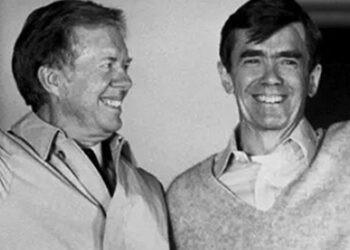The lottery appears to be increasingly popular with Iranians, who in 2010 won 60 percent more visas than in 2009—and more by far than in any other year. The results for 2011 have not yet been released.
The rising number of Iranian winners reflects a rising number of applications, which probably represents growing frustration with life in the Islamic Republic and an increasing desire to leave.
The lottery, run by the US State Department, awards 50,000 visas each year to applicants drawn at random by a computer. The winners’ spouses and children 18 years old and younger also get visas.
Millions of people apply every year for the 50,000 visas, which are immigration visas, not tourist visas, and allow the winners to become US citizens after five years. In 2010, there was a record 14.8 million qualified applicants
Applications may submitted only over the Internet at www.dvlottery.state.gov during the one-month window from noon Eastern Time, Tuesday, October 2, through noon, Saturday, November 3. Full directions are on the website.
Paper entries have not been accepted since 2003. When the State Department shifted from paper to digital, it also extended the window from one month to two months. But in 2010, without explanation, it went back to one month. Officials recommend that interested applicants not delay. They said that if a crush of applications late in the month causes a computer crash, the application window will not be extended.
Although this lottery is held during 2012, it is called the 2014 Visa Lottery because the actual visas will be handed out between October 1, 2013, and September 30, 2014, which is the US government’s Fiscal Year 2014.
The hardest part of the application for many people is the requirement for color photos of each applicant to be attached. Many applicants have to find someone more computer savvy to help them meet the lengthy requirements on the style and format of the photos. Those requirements are detailed on the website.
One change in the lottery that started in 2010 is that winners are no longer notified by mail. Everything is now done over the Internet. Applicants receive a “confirmation number” over the Internet. After next May 1, they can check in on the same website listed above, enter their confirmation number and find out if they were selected in the lottery.
The State Department warns that anyone receiving a letter or an e-mail telling them they have won and asking for a payment is being tapped by a fraud. It said the number of such scams is rising.
The State Department will pick about 100,000 names although there are only 50,000 actual winners. It does that because many applicants change their minds and decide they do not wish to seek a US immigrant visa. So, immigrant visas will actually go only to the first 50,000 winners who apply. Winners who apply late will become losers.
The purpose of the lottery is to diversify the ethnic base of the United States. It is, therefore, open to nationals of all countries except those that have sent more than 50,000 immigrants to the United States in the previous five years. Guatemalans, who have been ineligible for many years because there have been so many Guatemalans coming to the United States, will be eligible this year. This year, natives of 18 countries are not eligible. That improves the odds for applicants from Iran and other countries.
Many people submit multiple applications thinking that will improve their chances of winning an immigration visa. But the State Department computer searches out duplicate entries. It not only rejects the duplicates, it also throws out the original entry in such cases.
However, a husband and wife may each submit separate applications, and, if either wins, the winner may bring along the other spouse.
Millions of people apply each year for the lottery, but the winning percentage is actually significantly higher than in most financial lotteries. However, the visa lottery is growing in popularity so the chances of winning are decreasing.
For the 2004 lottery, 10.2 million applications were submitted. More than a quarter, 2.9 million, were rejected for errors or as duplicates. Of the remaining 7.3 million, 50,000 or 0.7 percent were winners.
In 2009, 16.5 million applications were filed and 12.1 million were determined to be legitimate—a two-thirds increase in just five years. But there were still only 50,000 winners—a 0.4 percent proportion.
In 2010, 19.7 million applications came in with 14.8 million ruled legitimate, a 22 percent increase in that one year. But the 50,000 winners represented only 0.3 percent of the qualified applicants.
In other words, the chances of winning have fallen in half in six years—from one in 146 in 2004 to one in 295 in 2010. But that is still much better odds than in most state lotteries.
It appears that many more Iranians are applying because many more Iranians are winning the annual visa lottery. Here is a table showing how many Iranians won the lottery a decade ago and in recent years, and where Iranians ranked.
Year Iranians Rank
2000 1703 16th
2001 768 29th
2002 1431 23rd
2008 2773 13th
2009 2819 10th
2010 4453 8th
The biggest interest in the lottery is in Africa. Of the seven countries that had more winners than Iran in the 2010 lottery, four were African. The countries winning more visas than Iran were in order: Nigeria (with 6,024 visas), Ghana, Ukraine, Ethiopia, Uzbekistan, Kenya and Egypt.
The volume of winners from Iran surprises many observers. The Iranian government does not allow any publicity for the lottery in the Iranian media, so news about it circulates only by word-of-mouth and through foreign broadcasters. In many countries with large numbers of winners, the local media publicize the lottery and explain it to readers and listeners.
The 18 countries from which natives may not apply this year are: Bangladesh, Brazil, Canada, China (mainland-born), Columbia, Dominican Republic, Ecuador, El Salvador, Haiti, India, Jamaica, Mexico, Pakistan, Peru, Philippines, South Korea, Britain and Vietnam. Not surprisingly, 10 of the 18 are in the Americas.














